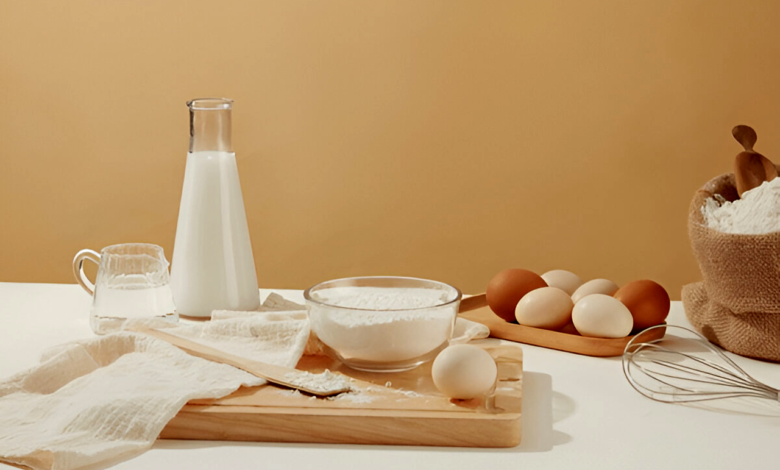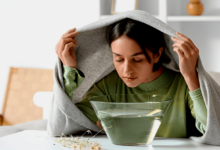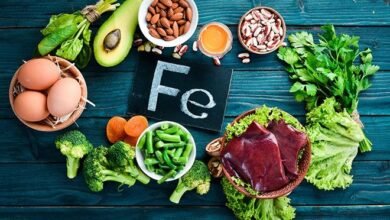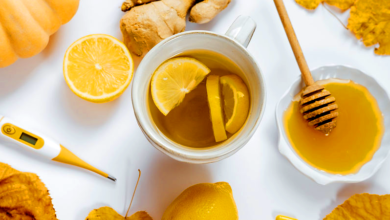Top DIY Cold and Flu Remedies Using Kitchen Ingredients
Discover DIY cold and flu remedies using kitchen ingredients like honey ginger and garlic for natural relief and faster recovery.

When cold and flu season arrives, many people rush to pharmacies for relief, but some of the most effective remedies can be found right in your kitchen. DIY cold and flu remedies using kitchen ingredients offer a natural, cost-effective way to ease symptoms while boosting immunity. Ingredients like honey, ginger, garlic, and lemon have powerful antiviral, antibacterial, and anti-inflammatory properties that can help soothe sore throats, clear congestion, and speed up recovery. Unlike over-the-counter medications, these home remedies come with minimal side effects, making them a great first line of defense against seasonal illnesses.
While severe cases may still require medical attention, mild to moderate cold and flu symptoms often respond well to simple, homemade solutions. From warming ginger tea to immune-boosting garlic tonics, these remedies have been used for generations across different cultures. In this guide, we’ll explore the best DIY cold and flu remedies using kitchen ingredients, backed by both traditional wisdom and modern science, so you can fight off illness naturally and effectively.
Top DIY Cold and Flu Remedies Using Kitchen Ingredients
Honey and Lemon for Soothing a Sore Throat
One of the most well-known DIY cold and flu remedies using kitchen ingredients is the classic combination of honey and lemon. Honey has natural antibacterial properties and acts as a cough suppressant, while lemon provides a dose of vitamin C to support the immune system. To make this remedy, mix one tablespoon of raw honey with the juice of half a lemon in a cup of warm water. Sip this mixture slowly to coat the throat and reduce irritation. For added benefits, a pinch of cinnamon or ginger can be included for their anti-inflammatory effects.
Ginger Tea for Nausea and Congestion
Ginger is a powerhouse when it comes to fighting cold and flu symptoms. Its natural anti-inflammatory and antiviral properties help reduce nausea, ease sore throats, and break up mucus congestion. To prepare ginger tea, slice a small piece of fresh ginger kitchen ingredients (about one inch) and steep it in boiling water for 10 minutes. For added potency, mix in a teaspoon of honey or a squeeze of lemon. Drinking this tea two to three times a day can help relieve sinus pressure and soothe an upset stomach.
Garlic for Immune Support
Garlic has been used for centuries as a natural remedy for infections due to its strong antimicrobial and immune-boosting properties. Allicin, the active compound in garlic, is known to fight bacteria and viruses effectively. One simple way to use garlic as a DIY cold and flu remedy is to crush a fresh clove and let it sit for a few minutes to activate the allicin. Then, mix it with honey or olive oil and consume it directly. Alternatively, adding raw garlic to soups and broths can enhance their healing properties.
Turmeric Milk for Anti-Inflammatory Relief
Turmeric, a golden-yellow spice, contains curcumin, a compound with powerful anti-inflammatory and antioxidant effects. When combined with warm milk (or a dairy-free alternative), it creates a soothing drink that helps relieve congestion and soreness. To make turmeric milk, heat a cup of milk and stir in half a teaspoon of turmeric powder, a pinch of black pepper (to enhance absorption), and a kitchen ingredient of honey. Drinking this before bed can promote restful sleep while reducing inflammation in the respiratory tract.
Apple Cider Vinegar for Detoxification
Apple cider vinegar (ACV) is another versatile kitchen ingredient that can help combat cold and flu symptoms. Its acidic nature helps break up mucus, while its antimicrobial properties fight infections. A popular remedy is mixing one to two tablespoons of raw, unfiltered ACV with warm water and kitchen ingredients. Gargling this solution can also help with a sore throat by killing bacteria. Some people take a shot of diluted ACV at the first sign of illness to boost immunity.
Chicken Soup for Hydration and Healing
Grandma’s chicken soup isn’t just an old wives’ tale it’s scientifically proven to help with cold and flu symptoms. The warm broth keeps you hydrated, while the vegetables and chicken provide essential nutrients that support recovery. Homemade chicken soup with garlic, onions, carrots, and celery delivers vitamins, minerals, and amino acids that reduce inflammation and speed up healing. The steam from the soup also helps clear nasal passages.
Saltwater Gargle for Throat Relief
A simple saltwater gargle is one of the oldest and most effective DIY cold and flu remedies. Salt helps draw out excess fluid from inflamed tissues, reducing swelling and discomfort. Dissolve half a teaspoon of salt in a glass of warm water and gargle for 30 seconds before spitting it out. Repeating this several times a day can help ease throat pain and prevent bacterial growth.
Peppermint Tea for Sinus Relief
Peppermint contains menthol, which acts as a natural decongestant. Drinking peppermint tea or inhaling its steam can help open up blocked sinuses and ease headaches. To make the tea, steep fresh or dried peppermint leaves in hot water for 5-10 minutes. Kitchen Ingredients honey can enhance its soothing effects. For a steam inhalation, pour boiling water over peppermint leaves in a bowl, cover your head with a towel, and breathe deeply. Peppermint also has mild pain-relieving properties, making it useful for tension headaches caused by sinus pressure.
Echinacea and Elderberry for Immune Boosting
While not strictly kitchen staples, echinacea and elderberry are widely used in natural cold and flu remedies. Elderberry syrup, in particular, has been shown to reduce the Kitchen Ingredients and duration of flu symptoms. You can make homemade elderberry syrup by simmering dried elderberries with water, honey, and spices like cinnamon and cloves. Taking a tablespoon daily during flu season can help strengthen immunity. Echinacea tea or supplements may also help prevent frequent colds by stimulating the immune system. However, it’s best used at the first sign of illness rather than as a long-term supplement.
Hydration with Herbal Teas and Broths
Staying hydrated is crucial when fighting a cold or flu. Warm liquids like herbal teas, broths, and water with lemon help thin mucus, prevent dehydration, and flush out toxins. Herbal teas such as chamomile, licorice root, and thyme offer additional benefits like relaxation and Kitchen Ingredients effects. Avoiding caffeine and sugary drinks is important, as they can dehydrate the body further.
Read More: The Ultimate Guide to Herbal Teas for Better Sleep
Conclusion
When battling cold and flu symptoms, turning to DIY cold and flu remedies using kitchen ingredients can provide safe, natural relief without harsh chemicals. From honey and lemon for sore throats to ginger and garlic for congestion and immunity, these pantry staples offer powerful healing properties that have stood the test of time. By incorporating these remedies at the first sign of illness, you can ease discomfort, shorten the duration of symptoms, and support your body’s natural recovery process.
While these DIY cold and flu remedies using kitchen ingredients are effective for mild cases, it’s important to listen to your body and seek medical attention if symptoms persist or worsen. Remember that rest, hydration, and proper nutrition are just as crucial as any remedy. By combining these natural solutions with good self-care habits, you can strengthen your immune system and stay resilient throughout cold and flu season. Nature’s medicine cabinet is closer than you think right in your own Kitchen Ingredients.
FAQs
Can honey really help with a cough?
Yes, honey has natural antibacterial properties and acts as a cough suppressant, making it an effective remedy for soothing throat irritation.
Is ginger safe for children with colds?
Yes, ginger tea with honey can be given to children over one year old to help with nausea and congestion.
How often should I drink turmeric milk for a cold?
Drinking turmeric milk once or twice a day can help reduce Kitchen Ingredients and promote recovery.
Does apple cider vinegar prevent the flu?
While ACV has antimicrobial Kitchen Ingredients, it’s not a guaranteed flu prevention method but may help boost immunity when used early.
Can I use these remedies alongside medications?
Most natural remedies are safe with Kitchen Ingredients but consult a doctor if you’re on prescription drugs or have chronic conditions.











